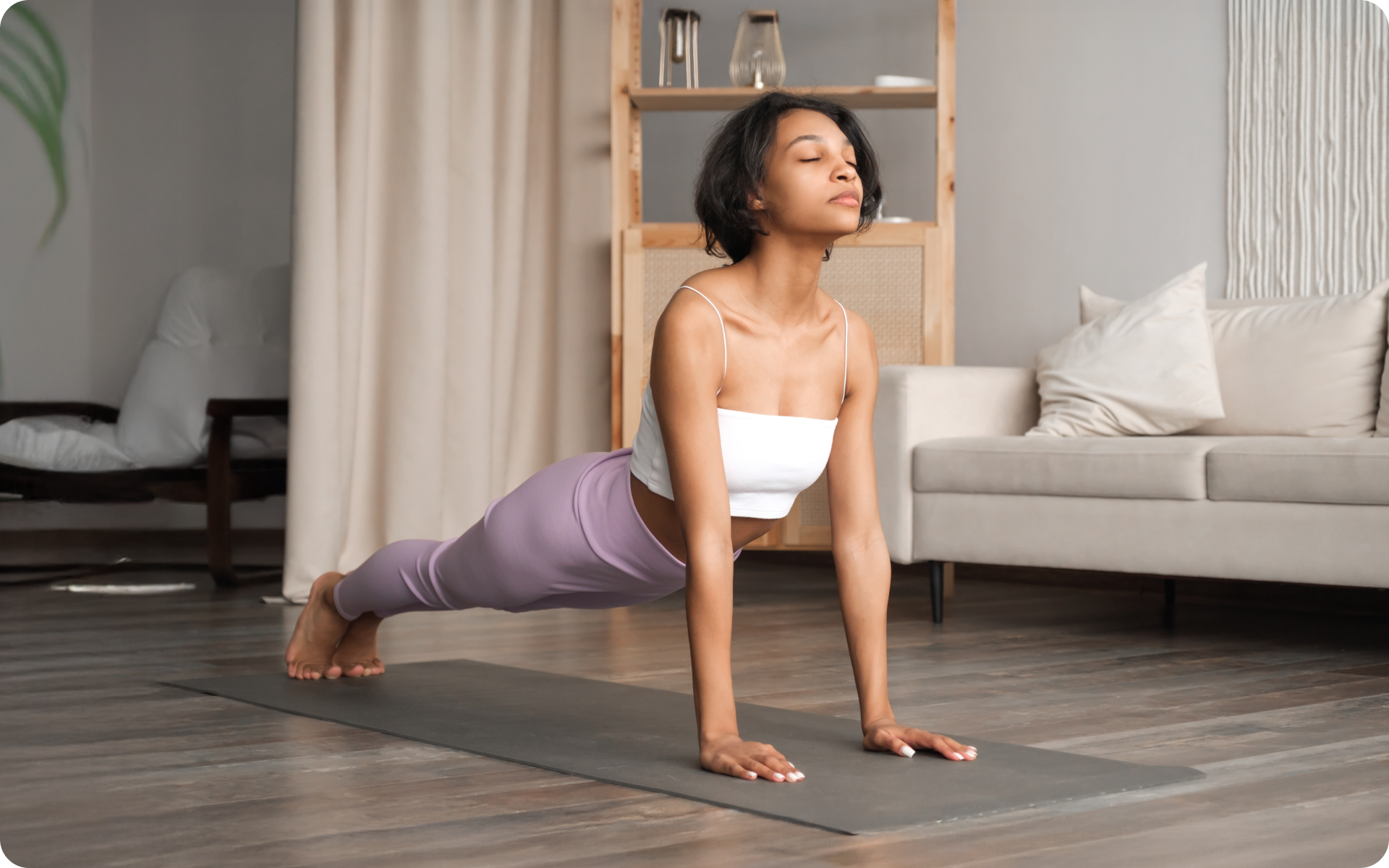Rehabilitation after surgery, injury, or a long-standing health condition is an essential part of the recovery process. Your physical therapist will come up with a customized program to suit your needs – usually including specific therapeutic exercises.
Therapeutic exercise is a broad term that encompasses many different physical activities designed to restore or improve one’s physical functionality. It’s a highly individualized plan that varies from person to person, depending on factors like age, fitness level, and overall health condition.
Yet, knowing the basics of these exercises and how they benefit your health can be an empowering tool in your healing journey.
In this guide, we’ll define therapeutic exercise, detail its various types, and discuss how they can significantly enhance your health.
What Is The Meaning of Exercise Therapy?
Exercise therapy, also referred to as therapeutic exercise, is a component of physical therapy that focuses on restoring and maintaining physical function through specific exercises. It’s a science-backed method that utilizes targeted movements to treat musculoskeletal conditions such as joint pain, muscle strains, and overall mobility issues (5).
Unlike general exercises like walking or jogging, therapeutic exercises are highly specialized and require the guidance of a licensed medical professional. They are designed to target specific areas of the body, promoting healing and improving overall physical function.
The principles of therapeutic exercise are as follows:
- Individualized approach: Each therapeutic exercise program is tailored to the individual’s unique needs, taking into account their medical history, physical abilities, and goals.
- Progressive overload: This principle involves gradually increasing the intensity or difficulty of exercises as the patient progresses in their recovery journey.
- Specificity: Therapeutic exercises target a specific area or function of the body that needs improvement, rather than being a general workout routine.
- Repetition: Consistency in performing the prescribed program is essential for achieving the desired results and improving muscle memory.
- Feedback: A trained professional provides feedback throughout the exercise session to ensure proper form and technique, preventing injury or further damage. This feedback comes in many forms and will be tailored to the needs of the individual. It may be tactile, verbal, visual, auditory, or any combination of these.
These principles aren’t exclusive to therapeutic exercises, but they are crucial in achieving the desired therapeutic effects.
Yanking yourself back in shape has never been so easy with our game-changing fitness app! Start transforming your life with BetterMe!
What Is Active Therapeutic Exercise?
Active therapeutic exercise is a type of rehabilitative exercise that requires the patient to actively participate in the movement. It involves using one’s own strength and range of motion to perform specific exercises, rather than relying on external equipment or assistance.
It’s one of two primary classifications of therapeutic exercise, the other being passive therapeutic exercise, which involves external forces and assistance from a therapist or equipment. There is a third category called active-assisted exercise, but this is a more specific method that will not be outlined as part of this article.
Passive exercises are typically used in the initial stages of rehabilitation to help reduce pain and stiffness, while active exercises are introduced either later on or simultaneously depending on the person’s activity tolerance and function to improve strength, balance, and overall physical function. Our somatic exercises article discusses some of these exercises in detail.
Beyond the active and passive classification of therapeutic exercise, various types of exercises fall under this umbrella term:
Range of Motion (ROM) Exercises
Range of motion exercises aim to improve the movement and mobility of specific joints (2). Exercises to improve flexibility are often good examples of range of motion exercises.
They are often prescribed for:
- Individuals with limited joint mobility due to injury or surgery
- People with chronic conditions like arthritis that cause stiffness and reduced range of motion
- Athletes looking to improve their flexibility for optimal performance
Range of motion exercises can be active, passive, or a combination of both. They typically involve slow and controlled movements targeting the affected joint.
They have the following benefits (2):
- Reducing stiffness and joint pain
- Improving muscle strength, balance, and coordination
- Increasing flexibility and range of motion
Examples of ROM exercises include:
- Shoulder rotations
- Knee bends
- Neck stretches
- Ankle rolls
Strengthening Exercises
As the name suggests, strengthening exercises are designed to improve muscle strength and endurance. They involve targeting specific muscles or muscle groups through resistance training (3).
These exercises use various techniques such as weights, resistance bands, body weights, and machines to build muscle mass and increase strength.
Strengthening exercises are often used in combination with other types of therapeutic exercises, such as cardio and ROM exercises, to improve overall physical function.
They may be prescribed for:
- Patients recovering from surgery or injury
- Individuals with chronic conditions that cause muscle weakness
- Athletes looking to build strength and prevent future injuries
Benefits of strengthening exercises include (3):
- Improved muscle mass, strength, and endurance
- Better balance and coordination
- Enhanced bone density
Examples of strengthening exercises include:
- Bicep curls using weights or resistance bands
- Squats and lunges using bodyweight or weights
- Leg presses using a resistance machine
Read more: Somatic Healing Techniques: A Holistic Approach to Physical and Emotional Recovery
Endurance or Aerobic Exercises
Endurance exercises, also known as aerobic exercises, focus on improving cardiovascular function and overall endurance. These activities increase heart rate and breathing rate, delivering oxygen and nutrients to the body’s tissues (1).
These therapeutic exercises may be prescribed for:
- Individuals with heart disease or high blood pressure
- People recovering from a stroke or other cardiac event
- Anyone looking to improve their overall physical fitness and endurance
Endurance exercises have several benefits, including (1):
- Improve cardiovascular health for better heart and lung function
- Boost energy levels and endurance for daily activities after an injury or surgery
- Control and prevent chronic health conditions
Examples of endurance exercises include:
- Brisk walking or jogging
- Cycling
- Swimming
- Dancing
Balance and Coordination Exercises
Balance and coordination exercises are designed to improve an individual’s ability to control their body’s movements, maintain balance, and prevent falls (6).
They may be prescribed for:
- Older adults at risk of falling due to age-related muscle weakness or medical conditions
- Individuals with musculoskeletal or neurological conditions which affect balance and coordination
- Athletes looking to improve their balance and coordination for optimal performance
Benefits of balance and coordination exercises include (6):
- Reducing the risk of falls and injuries
- Improving postural awareness and overall physical function
- Enhancing athletic performance in sports that require balance and coordination
Examples of balance and coordination exercises include:
- Single-leg stands
- Toe touches while standing on one leg
- Heel walking
- Toe walking
- Yoga or tai chi poses.
If you wish to cinch your waist, tone up your bat wings, blast away the muffin top – our fitness app was created to cater to all your needs! BetterMe won’t give excess weight a chance!
What Are Some Reasons for Therapeutic Exercise?
Therapeutic exercise may be necessary for rehabilitation after an injury or surgery, to manage chronic conditions, or to improve overall physical function. Some common reasons for therapeutic exercise include:
Recovery from Surgery
Major surgery like joint replacement or spinal surgery can leave the muscles and joints weakened, inflamed, and stiff. Therapeutic exercises help in regaining strength, mobility, and function after a surgical procedure (5).
Pain Relief
Injuries, chronic conditions, or post-surgical pain can be managed with therapeutic exercises that target specific areas of the body. These exercises help to reduce inflammation and pain while promoting healing and improving mobility (7).
Injury Prevention
Therapeutic exercises can be used as a preventative measure to reduce the risk of injuries, especially in athletes (5). By improving muscle strength, flexibility, and balance, these exercises help prevent future injuries from occurring.
Improved Physical Function
Therapeutic exercise can significantly improve overall physical function for individuals with chronic conditions, disabilities, or those recovering from an injury or surgery. By targeting specific areas of weakness and focusing on improving range of motion, flexibility, strength, and endurance, individuals can experience a better quality of life and increased independence in daily activities (7).
Mental Health Benefits
Physical health is closely linked to mental well-being, and therapeutic exercise can have positive effects on both. Regular physical activity through therapeutic exercises has been shown to improve mood, reduce stress and anxiety, and promote overall mental wellness (5). Some studies have also shown the benefits of therapeutic exercises for individuals with depression and other mental health conditions (5).
Read more: Somatic Dance: Liberation through Expression and Movement
What Qualifies As Therapeutic Activities?
Therapeutic activity is a term that’s often used interchangeably with therapeutic exercise, but it encompasses a broader range of activities.
While therapeutic exercises focus primarily on physical rehabilitation, therapeutic activities encompass both physical and mental aspects of rehabilitation.
Examples of therapeutic activities include:
- Art therapy for individuals with mental health disorders
- Music therapy to improve cognitive function in patients with dementia
- Horticultural therapy to promote relaxation and improve motor skills in individuals with disabilities
These activities use artistic, musical, or recreational forms to help individuals express themselves, cope with stress, and improve their overall well-being.
In addition to these types of therapeutic activities, there are many others that fall under the umbrella of rehabilitative therapy. This includes aquatic therapy, soft tissue mobilization, and neuromuscular re-education.
Each of these therapies has its own unique benefits and may be prescribed based on an individual’s specific needs and goals.
Ultimately, the goal of therapeutic exercise and activity is to improve physical function, reduce pain, and enhance overall quality of life for individuals recovering from injury (5).
In our write-up on Somatic Grounding Exercises, we highlight the connection between body and mind, emphasizing the importance of incorporating both physical and mental aspects into rehabilitation.
FAQs
Is Walking a Therapeutic Exercise?
Yes, walking counts as therapeutic exercise, especially when done with a specific purpose or goal, such as improving cardiovascular health or recovering from an injury. Walking can also offer mental health benefits and is often recommended for individuals with mental health conditions (8).
In our discussion of Somatic Exercise, we point out how movement and physical activity can have a positive impact on mental health.
Is Stretching a Therapeutic Exercise?
Stretching can be considered a therapeutic exercise when used as part of a targeted rehabilitation program. Stretching helps to improve range of motion, flexibility, and muscular pliability, making it an essential component of many therapeutic exercises (4).
For effective and safe therapeutic stretching, you should consult with a healthcare professional such as a physical therapist who can advise on the appropriate stretches for your specific needs.
Our Somatic Bodywork article explores various types of stretches that can be incorporated into a therapeutic exercise routine.
What Is The Difference Between Therapeutic Activity and Exercise?
The difference between therapeutic activity and exercise lies in their scope. Therapeutic activity has a larger, more holistic approach and includes a wide range of activities beyond physical exercises.
On the other hand, therapeutic exercise involves specific, individualized exercises and movements to improve strength, mobility, and function based on a person’s impairments and goals.
Both therapeutic activity and exercise can play important roles in rehabilitation, and in combination, one can obtain optimal results.
The Bottom Line
Active therapeutic exercise is a vital component of physical rehabilitation and injury prevention. By incorporating different types of exercises, therapists can help patients achieve their desired therapeutic outcomes and improve their overall physical function. Remember to always consult a trained professional before starting any new exercise program for proper guidance and feedback.
DISCLAIMER:
This article is intended for general informational purposes only and does not serve to address individual circumstances. It is not a substitute for professional advice or help and should not be relied on for making any kind of decision-making. Any action taken as a direct or indirect result of the information in this article is entirely at your own risk and is your sole responsibility.
BetterMe, its content staff, and its medical advisors accept no responsibility for inaccuracies, errors, misstatements, inconsistencies, or omissions and specifically disclaim any liability, loss or risk, personal, professional or otherwise, which may be incurred as a consequence, directly or indirectly, of the use and/or application of any content.
You should always seek the advice of your physician or other qualified health provider with any questions you may have regarding a medical condition or your specific situation. Never disregard professional medical advice or delay seeking it because of BetterMe content. If you suspect or think you may have a medical emergency, call your doctor.
SOURCES:
- Aerobic exercise and endurance: improving fitness for health benefits (2003,nih.gov)
- Effects of a range-of-motion exercise programme (2007,nih.gov)
- Resistance training – health benefits (2022,betterhealth.vic.gov.au)
- Stretching: 9 Benefits (2019,nih.gov)
- Therapeutic Exercise (2023,nih.gov)
- The Effect of Balance and Coordination Exercises on Quality of Life in Older Adults: A Mini-Review (2019,nih.gov)
- The Importance of Exercise as a Therapeutic Agent (2002,nih.gov)
- Walking for good health (2023,betterhealth.vic.gov.au)














